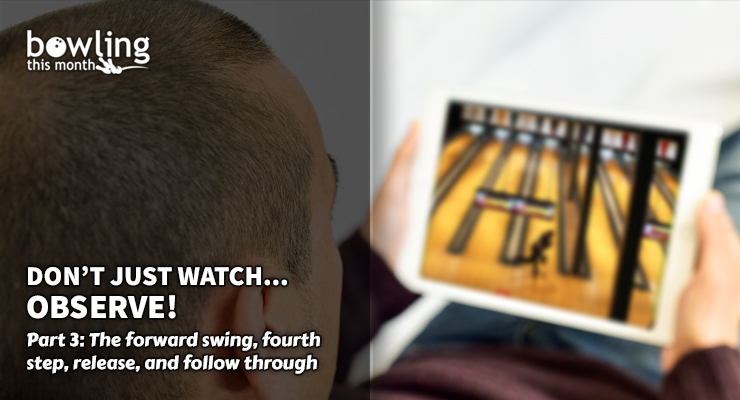Watching versus observing…is there a difference? There sure is. Watching is passive, observing is active.
Watching involves doing nothing while the action unfolds in front of you. Watching bowling means you allow the bowlers to entertain you; nothing is required of you and there will be no consequences if you walk away. Watching means you don’t learn a thing.
But to improve—to be a better bowler—you need to observe what you see, make notes, and pledge that you’ll work to improve your game. Observing means paying close attention instead of just sitting there. Observing forces you to make decisions, either what it is about your game that you want to change, or simply to “see how the pros do it” so that maybe you’ll try to incorporate what you see into your own game.
None of the three articles in this series (click here for Part 1; click here for Part 2) can be termed a “how-to.” They’re just the opposite, really, because by observing, you literally become your own coach—you teach yourself. In these articles, my goal is to give an overview of the art of observing. Specifically, I’ve talked about how you can work on your game by sitting in front of a TV or computer screen and observing top bowlers do what they do, while you decide if you can incorporate what they do into your game.
I’ve barely scratched the surface of this topic. In fact, it is a topic that has no limits. Anyone’s game can be analyzed in split-second increments, as in “At what point—exactly—did that bowler’s thumb exit the ball?” as you compare his or her release to your own.
Perhaps you wonder, after observing several seemingly identical shots produce different results each time, “Does that bowler’s backswing peak at exactly the same height every shot?” or “Did he grab ...
Already a premium member? Click here to log in.


 (Only
(Only 